Click to view our Accessibility Statement or contact us with accessibility-related questions








Desoldering, Mill-Maxing, And Why You Might Want To Learn Both

search
close
Sort by: Newest
keyboard_arrow_down
storyboardtech
519
Keyboard Club Member
Jan 14, 2025
Dude. That's intense! Well written fever dream bathed in solder smoke. Love it. Also, I know where to go when I'm ready to watch some mill maxing videos!

HubertTheMad
215
Keyboard Club Member
Jan 14, 2025
storyboardtechHahaha, I wonder how much solder fumes I've inhaled! I appreciate it, and I'm glad I had some old (and a tad embarrassing) footage to use in this article.
PRODUCTS YOU MAY LIKE
Trending Posts in Mechanical Keyboards
Replayinfinite
Finally got my dream keycaps!
Melgeek made 68 ultra with gmk mecha 01, surprisingly matches well.
Jan 14, 2025

Jazzygirl
Keyboard stopped working
I came home today and my keyboard just randomly stopped working. I have it plugged into a connector that connects to my laptop. I've tried unplugging and plugging it back it multiple times but when I try to type on the keyboard my computer does not register the keyboard no matter what I do. I tried the wire as well as bluetooth and nothing works. Although when I press on the keys they still light up. Can someone help me to figure out why it's no longer connecting to my computer?
Jan 13, 2025

HubertTheMad
Desoldering, Mill-Maxing, And Why You Might Want To Learn Both
Thanks to StoryboardTech’s fantastic article, you finally learned how to solder! Or at least, you’re committed to learning. So, what’s next? Well, if you’re brave enough, why not learn how to desolder as well? And when you feel confident with that, how about Mill-Max? You don’t necessarily have to know or learn how to solder before learning how to desolder or Mill-max, but in my opinion, getting comfortable with soldering is a great step towards learning how to do the other two, and if you know how to solder, you can practice desoldering and mill-maxing to your heart’s content since you’ll already have the tools from learning how to solder! Well, at least most of the tools. Let’s start off with the good ol’ disclaimer section first, however. Disclaimer These are my own opinions and my own thoughts, and if I’ve learned anything in life, it’s that we all do things in slightly different ways. Whether it be deadlifting, desoldering, Mill-Maxing or even baking...
Jan 13, 2025

HubertTheMad
Keyboard Sound Tests And Room Treatment
Old Picture Of Mics I Used To Have/had Access To A While Back "Which mic should I buy to record my keyboard sound tests? Do I have to sound-treat my room to make my recordings better? Should I not have my mic attached to the desk I’m typing on to avoid picking up desk noise?" Whether you’ve had one of these questions or all of these questions (just like me when I first started), I’m hoping that this article will give you sufficient answers to the questions we think about when recording our sound tests. Like with the majority of my content, these are just my thoughts, and I encourage you to continue to research your questions by watching videos or reading other articles. Just because I give my opinions in this article doesn’t mean that other people’s opinions are wrong, or that you should just listen to me. I'm not an expert at any of this stuff, and I'm just scratching the surface of audio. There is so much that goes into mixing and recording that to pretend that I know...
Jan 6, 2025

HubertTheMad
DCS Sleeper on Masjewerke K-III Prototype
DCS is good! Using DCS BAE from Sneakbox Design's run of BAEs last year. Might use a 10u that isn't the exact color of the alphas, but close enough!
Jan 3, 2025

cheekybean5
Perfect Pairing!
Love the colorway on the jasmine cable. Pretty much made for the Ducky One III matcha.
Jan 3, 2025
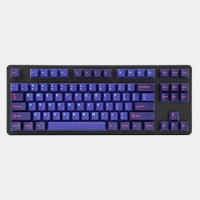
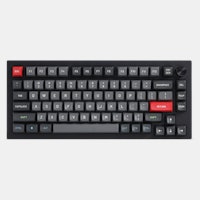
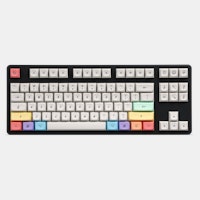
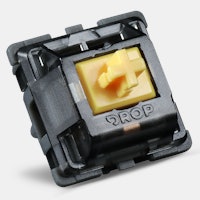
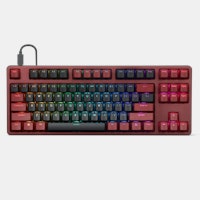
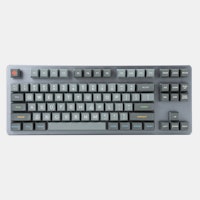
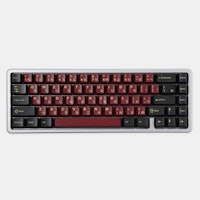
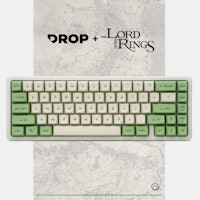
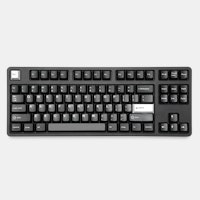
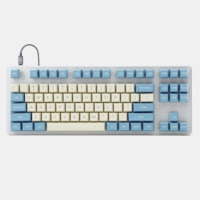






Instead Of Including Amazon Links (Even Though I Don't Get Any Sort Of Kickback), I Figured I'd Just Post Screenshots In Case You Want To Get The Item(s) On Other Websites Other Than Amazon.
Method 1: Desoldering Pump/Solder Sucker There are three common methods when it comes to keyboard desoldering, and I’ll start with the method I learned first (desoldering pump), then the second method (desoldering gun), and then the last (wick). It won’t necessarily be cheapest to most expensive, so keep that in mind. You can go from cheapest to most expensive, but I figured I’d explain my own, personal progression. I first learned how to desolder with a desoldering pump. There are many variations, each with its pros and cons, but I learned with an engineer solder sucker/desoldering pump. I’ll also be focusing on desoldering switches, specifically desoldering lead solder joints. If working with lead-free solder, I’ll talk about that in a later section, but for these first three sections, this advice is mostly for when desoldering leaded solder. The method for using a pump is that you have your soldering iron in one hand, set a tad bit higher temperature-wise than what you’d normally use to solder (or experiment, but be warned, we don’t want to burn or lift a pad. If that happens, you can fix it by soldering a jumper wire, but we won’t be going over that in this article). I solder at 350 Celsius and desolder at 365 Celsius, but whatever works for you without damaging the PCB is fine. The important thing to remember is that you want a hot enough temp to melt the solder, yet not hot enough that you damage the PCB or the solder pad.
Making Sure That The Switch Pins Are Free Of Any Solder Before Yanking
Start at 1:57 That’s basically all you have to do if you use a desoldering pump. After a few suctions, or if you notice the solder not getting sucked up, you’ll want to clean the pump out completely and/or clean the nozzle. I have small hands, so the fact that I could grip it with one hand and the soldering iron with the other, plus easily press the suction button was what sold me on the engineer, however, I do understand that if you have bigger hands, it may cramp your hand. Solder also tends to get stuck in the nozzle frequently, so you’ll have to clear that out more often than something like a big black or big blue desoldering pump, but with that type of pump, it may be a bit unwieldy. It just depends on which you get used to, are comfortable with based on how large your hands are or other factors, and what you practice with. Either style of pump works!
Method 2: Desoldering Gun
Eclipse60 Solder PCB Layout Well, it obviously costs more since you have to buy sockets. Some cases also have super tight tolerances where the Mill-Max socket may scrape the bottom of the case, and/or they won’t allow the case to close as Mill-Max socket “tails” are longer than switch pins when normally soldering in switches. Another con is that if you mess up Mill-Maxing, it could damage your PCB, switch, or socket, and in general, you have to be a bit more careful when Mill-Maxing and it takes more time to do so. If solder gets into the socket itself, the socket may no longer work. A third con is that there may be perceptible sound and feel differences as compared to hotswap or just straight-up soldering. Since the switch isn’t sitting directly onto the PCB, even if you use a Mill-Max socket with a low lip, there still may be a difference in both sound and feel when compared to hotswap or soldered builds. Honestly, Unless you’re a huge stickler for sound and/or feel, I don’t think this is AS big of a con, but I do want to bring it up. If you want to determine if this is a deal-breaker, I suggest you watch KeyBonbon/Christian’s sound test video on the differences in sound as well as research on your own. I also want to bring up the fact that some switches have wider/fatter switch pins than others, resulting in a switch possibly not fitting into the socket, or you having a super hard time removing it once installed into a socket. However, with all that being said, I think it’s super useful to know how to Mill-Max just because it adds another tool to your toolbelt.
From KEEBD's guide (awesome guide!) Let’s talk about the anatomy of a Mill-Max socket. You’ve got the lip, which sits on top of the PCB, and then you’ve got the tail, which sticks out on the other side of the PCB. There are also different types of Mill-Max sockets. You’ve got the 7305s, which have a shorter tail and lip, which may be a bit more difficult to prevent solder from getting into the socket since they’re shorter. These used to be the most expensive types of sockets.
Courtesy Of Mech.Land You’ve got the 0305s, which have a longer tail and lip, which can be better at preventing solder from getting into the socket, these are the cheapest, but as I stated earlier, since they’re longer, they may not be compatible with cases that have tight tolerances between the bottom of the PCB and bottom case, and then you’ve got the 3305s, which kind of combine the two. Not as long of a tail as the 0305s, a shorter lip than the 7305s, but these are the most expensive.
Keebio's Guide (Also Awesome) Depending on your case and what you’re aiming to do, each has its own pros and cons. I’ve only specifically used 3305s, but that doesn’t mean that they’re the “best” at everything. Remember, make sure you have enough clearance between the PCB and case before buying any of the three, and make sure you buy enough. Don’t just buy the exact amount needed for each switch leg hole, buy some more in the event that you make a mistake.
Courtesy of Mecha Store The second is to actually insert your sockets into a switch and then place your switch into the PCB, and then solder the tails on the backside of the PCB. This is the method I use. Start At 32:00